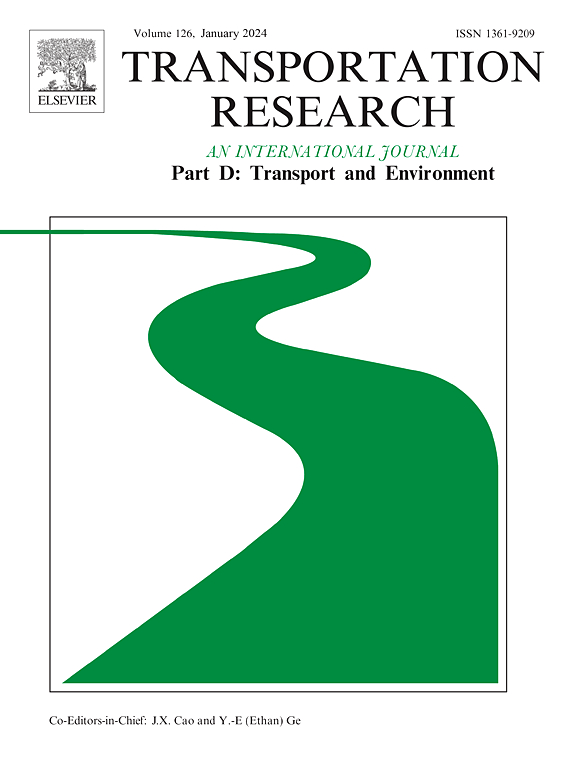MaaS:哪些资源是推动者,哪些资源被排除在外?
IF 7.7
1区 工程技术
Q1 ENVIRONMENTAL STUDIES
Transportation Research Part D-transport and Environment
Pub Date : 2025-09-10
DOI:10.1016/j.trd.2025.104990
引用次数: 0
摘要
由于空间可用性和诸如移动数据、数字素养或车辆驾驶技能等资源的限制,某些人群使用MaaS服务受到限制。此外,这些服务往往比传统的运输方式更昂贵,这可能导致社会排斥。本研究旨在确定能够或阻碍访问MaaS的资源。这些资源是从文献中确定的,然后纳入在里斯本进行的一项调查(n = 2000)。我们的结果表明,20%到30%的受访者缺乏使用MaaS所需的资源。但是,访问MaaS的范围取决于特定用户能够使用的MaaS捆绑包中的服务或服务,这在很大程度上受其配置文件的影响。我们确定了提供对MaaS的访问的主要资源,并讨论了为不同的推动者提供灵活性以增加可访问性的重要性。我们的结论是,公共当局应该在决定在哪里以及如何提供新的移动服务方面发挥作用,运营商应该考虑本研究中确定的资源范围,以确保更广泛的人口群体更广泛地使用各种交通方式,避免被排斥。本文章由计算机程序翻译,如有差异,请以英文原文为准。
MaaS: Which resources are enablers, and who is being excluded?
Access to MaaS services is restricted for some population segments due to the spatial availability and to resources like mobile data, digital literacy, or vehicle-riding skills. Moreover, these services are frequently more expensive than traditional modes of transportation, which may contribute to social exclusion. This study aims to identify the resources that enable or hinder access to MaaS. These resources were identified from the literature and then included in a survey (n = 2000) conducted in Lisbon. Our results indicate that 20 to 30 % of respondents lack the necessary resources to use MaaS. However, the extent of access to MaaS is contingent upon the service or services within a MaaS bundle that a particular user is enabled to use, which is significantly influenced by their profile. We identified the main resources that provide access to MaaS and addressed the importance of providing flexibility for different enablers to increase accessibility. We conclude that public authorities should play a role in deciding where and how to provide new mobility services and that operators should consider the range of resources identified in this study to ensure broader access to the various modes of transport for a wider population segment and avoid exclusion.
求助全文
通过发布文献求助,成功后即可免费获取论文全文。
去求助
来源期刊
CiteScore
14.40
自引率
9.20%
发文量
314
审稿时长
39 days
期刊介绍:
Transportation Research Part D: Transport and Environment focuses on original research exploring the environmental impacts of transportation, policy responses to these impacts, and their implications for transportation system design, planning, and management. The journal comprehensively covers the interaction between transportation and the environment, ranging from local effects on specific geographical areas to global implications such as natural resource depletion and atmospheric pollution.
We welcome research papers across all transportation modes, including maritime, air, and land transportation, assessing their environmental impacts broadly. Papers addressing both mobile aspects and transportation infrastructure are considered. The journal prioritizes empirical findings and policy responses of regulatory, planning, technical, or fiscal nature. Articles are policy-driven, accessible, and applicable to readers from diverse disciplines, emphasizing relevance and practicality. We encourage interdisciplinary submissions and welcome contributions from economically developing and advanced countries alike, reflecting our international orientation.

 求助内容:
求助内容: 应助结果提醒方式:
应助结果提醒方式:


